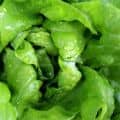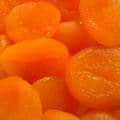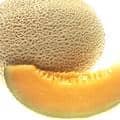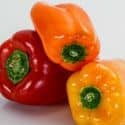There’s a feeling of inevitability in writing about McDonald’s latest offering, their “bowl full of wholesome” — also known as oatmeal. The leading fast-food multinational, with sales over $16.5 billion a year (just under the G.D.P. of Afghanistan), represents a great deal of what is wrong with American food today. From a marketing perspective, they can do almost nothing wrong; from a nutritional perspective, they can do almost nothing right, as the oatmeal fiasco demonstrates.
One “positive” often raised about McDonald’s is that it sells calories cheap. But since many of these calories are in forms detrimental rather than beneficial to our health and to the environment, they’re actually quite expensive — the costs aren’t seen at the cash register but in the form of high health care bills and environmental degradation.
Oatmeal is on the other end of the food spectrum. Real oatmeal contains no ingredients; rather, it is an ingredient. As such, it’s a promising lifesaver: oats are easy to grow in almost any non-extreme climate and, minimally processed, they’re profoundly nourishing, inexpensive and ridiculously easy to cook. They can even be eaten raw, but more on that in a moment.
Like so many other venerable foods, oatmeal has been roundly abused by food marketers for more than 40 years. Take, for example, Quaker Strawberries and Cream Instant Oatmeal, which contains no strawberries, no cream, 12 times the sugars of Quaker Old Fashioned Oats and only half of the fiber. At least it’s inexpensive, less than 50 cents a packet on average. (A serving of cooked rolled oats will set you back half that at most, plus the cost of condiments; of course, it’ll be much better in every respect.)
The oatmeal and McDonald’s story broke late last year, when Mickey D’s, in its ongoing effort to tell us that it’s offering “a selection of balanced choices” (and to keep in step with arch-rival Starbucks) began to sell the cereal. Yet in typical McDonald’s fashion, the company is doing everything it can to turn oatmeal into yet another bad choice. (Not only that, they’ve made it more expensive than a double-cheeseburger: $2.38 per serving in New York.) “Cream” (which contains seven ingredients, two of them actual dairy) is automatically added; brown sugar is ostensibly optional, but it’s also added routinely unless a customer specifically requests otherwise. There are also diced apples, dried cranberries and raisins, the least processed of the ingredients (even the oatmeal contains seven ingredients, including “natural flavor”).
A more accurate description than “100 percent natural whole-grain oats,” “plump raisins,” “sweet cranberries” and “crisp fresh apples” would be “oats, sugar, sweetened dried fruit, cream and 11 weird ingredients you would never keep in your kitchen.”
Since we know there are barely any rules governing promotion of foods, one might wonder how this compares to real oatmeal, besides being 10 times as expensive. Some will say that it tastes better, but that’s because they’re addicted to sickly sweet foods, which is what this bowlful of wholesome is.
Others will argue that the McDonald’s version is more “convenient.” This is nonsense; in the time it takes to go into a McDonald’s, stand in line, order, wait, pay and leave, you could make oatmeal for four while taking your vitamins, brushing your teeth and half-unloading the dishwasher. (If you’re too busy to eat it before you leave the house, you could throw it in a container and microwave it at work. If you prefer so-called instant, flavored oatmeal, see this link, which will describe how to make your own).
If you don’t want to bother with the stove at all, you could put some rolled oats (instant not necessary) in a glass or bowl, along with a teeny pinch of salt, sugar or maple syrup or honey, maybe some dried fruit. Add milk and let stand for a minute (or 10). Eat. Eat while you’re walking around getting dressed. And then talk to me about convenience.
The aspect one cannot argue is nutrition: Incredibly, the McDonald’s product contains more sugar than a Snickers bar and only 10 fewer calories than a McDonald’s cheeseburger or Egg McMuffin. (Even without the brown sugar it has more calories than a McDonald’s hamburger.)
The bottom-line question is, “Why?” Why would McDonald’s, which appears every now and then to try to persuade us that it is adding “healthier” foods to its menu, take a venerable ingredient like oatmeal and turn it into expensive junk food? Why create a hideous concoction of 21 ingredients, many of them chemical and/or unnecessary? Why not try, for once, to keep it honest?
I asked them this, via e-mail: “Why could you not make oatmeal with nothing more than real oats and plain water, and offer customers a sweetener or two (honey, the only food on earth that doesn’t spoil, would seem a natural fit for this purpose), a packet of mixed dried fruit, and half-and-half or — even better — skim milk?”
Their answer, via e-mail and through a spokesperson (FMO is “fruit and maple oatmeal”): “Customers can order FMO with or without the light cream, brown sugar and the fruit. Our menu is entirely customizable by request with our ‘Made for You’ platform that has been in place since the late 90s.”
Oh, please. Here’s the thing: McDonald’s wants to get people in the store. Once a day, once a week, once a month, the more the better, of course, but routinely. And if you buy oatmeal, they’re O.K. with that. But they know that, once inside, you’ll probably opt for a sausage biscuit anyway.
And you won’t be much worse off.
Visit my blog, where you can find out more about my columns, or what I just cooked. You can also join me on Facebook or Twitter.









